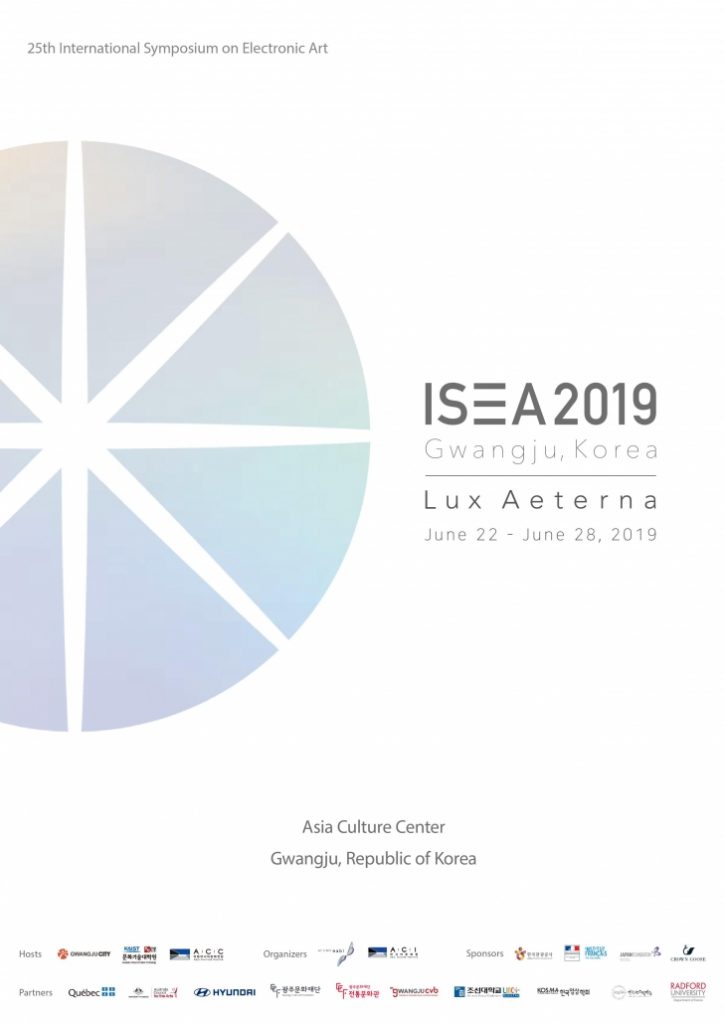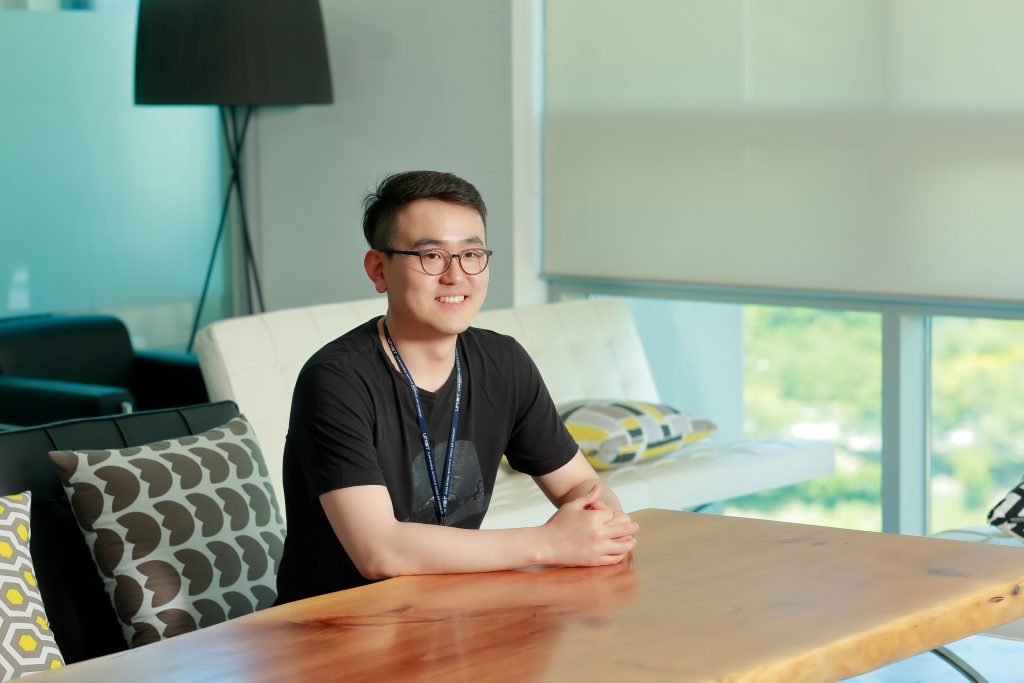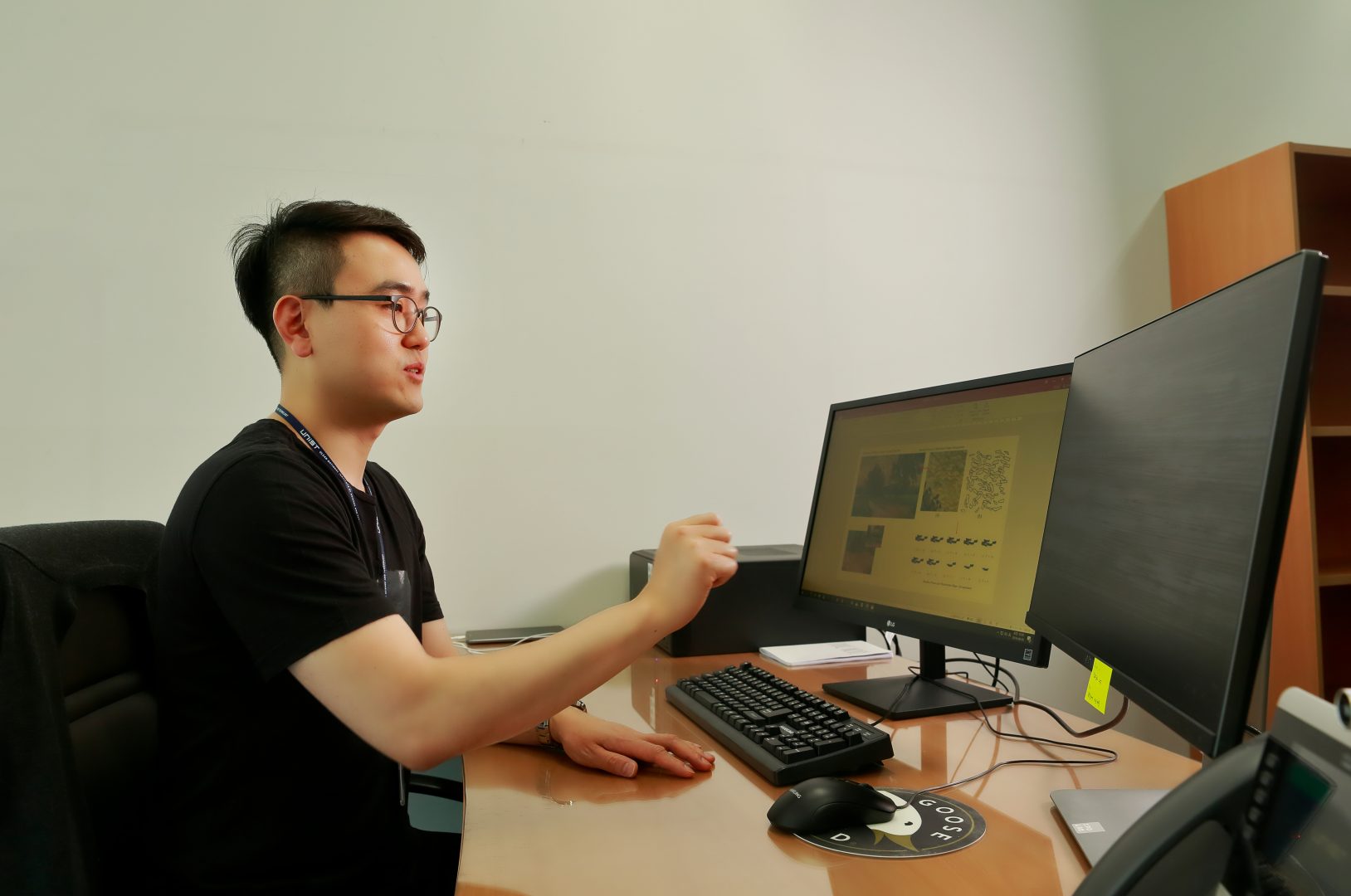
In front of a computer that creates, what is the role of a designer?
Interviewed by Seokmin KimYou can find the Korean version of this page here.
이 페이지의 한국어 버전은 여기에서 찾을 수 있습니다.
This interview was originally conducted by Seokmin Kim of UNIST PR team and published on UNIST News Center. In this interview, Assistant Professor Kyungho Lee shares his thoughts on the advent of artificial intelligence and the emerging role of designers.
“With new technological advances, including artificial intelligence, the clash between designers and technology is accelerating. It’s time to think about how to embrace and apply rapidly evolving technologies to show the creativity of designers.”
Kyungho Lee
Assistant Professor Kyungho Lee at the Design Department, will exhibit his works at the global media art exhibition, 2019 International Symposium on Electronic Arts (ISEA), and present his paper.
ISEA has been held in 17 countries over the past 30 years as an international media art festival since 1988, with more than 1,000 artists and experts participating every year. This year’s ISEA will be held at the National Asian Culture Center in Gwangju from June 22nd to 28th under the theme of Lux Aeterna. This year, more than 1,200 works received from 59 countries will be displayed.

Professor Kyungho Lee presents two works here. Misplaced Euphoria is an interactive dance performance based on machine learning to raise awareness about bipolar disorder, and Computational Impressionism shows the process of a computer that simulates the brush strokes of impressionist artists. The two works will be presented as notable examples of Emerging Media Arts and will convey the meaning and value of art art-based approach on cutting-edge technology to the audience.
UNIST news center met professor Kyungho Lee, who took on a challenge for new media art, and heard stories about the exhibitions, his works and research.
Seokmin Kim (SM) You just started working as a professor in UNIST. Have you been long been preparing for this exhibition?
Kyungho Lee (KH) I came to UNIST on May 20 of this year. In fact, I have participated in ISEA even before joining UNIST, and this is in fact already the third time. I am happy to participate in ISEA in Gwangju as I move to Korea. In particular, this year’s event will be held on a larger scale, so I hope it will be of great help in promoting the media art field.

SM Could you explain in more detail about the works to be exhibited?
KH A total of two works will be shown at the exhibition. One is an interactive dance performance titled Misplaced Euphoria, which was designed to raise awareness about bipolar patients, and was produced in collaboration with a student majoring in contemporary dance. Bipolar disorder is a serious problem that is considered one of the major causes of suicide in American teenagers, but people often talk about it as if it is a light emotional ups and downs. I designed a work that evokes interest in the problem and allow people to experience bipolar disorder indirectly.
Through interviews with actual patients, we collected descriptions and impressions of each emotional state and accumulated them into data and visualized them. The contemporary dance student who worked with me expressed the change of emotions through dance, and I used machine learning to analyze the change of emotions expressed in the dance and created the work. I think this can be an opportunity to attract people’s attention through digital media and ultimately lead to a change in perception.
Another work is called Computational Impressionism. This series is about the process of a computer that has mastered the impressionist artist’s style of painting with its own brush stroke styles. If you watch the video, you can see that the computer creates an impressionist painting based on the given picture.
The series was initially started by data-zing – turning the style of impressionist painters into data – so that computers could recreate past paintings. For example, Van Gogh’s works were analyzed, and the brush stroke patterns were extracted, and the computer was able to reproduce the style. This work was a process of asking various questions about the meaning of art as technology evolved.
For example, a computer that has learned the brush stroke styles of these impressionist artists can be expected to perfectly reproduce past paintings, and even create future works that would have been created if the artists continue to live and work. If, as technology continues to advance, computers that are superior to humans create creative work, what should the aesthetics of the time mean?
Of course, the moment when computers are on par with or exceed human creativity has yet to come, and it is not likely to happen very soon. However, I think that it is necessary to think about the conflict the rapidly advancing technologies will bring to arts and culture, and the changes that would be accompanied by.
SM How did you get to decide to major in media art?
KH When I was an undergraduate, I majored in industrial design and information culture, and I built my career in a design consultancy. In the process of designing various products, I continuously felt the need for engineering knowledge and I wanted to challenge myself to gain it. Long story short, I got interested in informatics and computer science, and I started my Ph.D. program with the support of the Fulbright Scholarship Foundation in the U.S., and now I’m here.
The field of media art has longer history than people might usually think. Nam June Paik has produced his works already in the ’70s stating that he can make video art “as accurate as Leonardo, as free as Picasso, as colorful as Renoir, as profound as Mondrian, as intensive as Pollock, as emotional as Jasper Jones.” Recently, media art is also called as emerging media art. This concept embraces the advent modern technology and completely new types of media art which the technology enables. I product my work and conduct research in this field.

Art has for long evolving through the use, and by the impact of, technology and engineering. I conduct research on emerging modes of art because I think it is important to think about them as a person who majored in both design and engineering. Investigating the relationship between artificial intelligence, machine learning, deep learning that’s been receiving social attention recently, with arts reflectively and critically.
SM Then, where would you say the value lies in studying the relationship between technology and design?
KH One of the key questions I am asking is, “How can I accept and apply technology to avoid devaluing designers’ creativity?”. The latest technologies continue to evolve, and they are increasingly used in design. I think it’s important to explore designers’ creative roles critically reflecting upon these new technologies.
This becomes increasingly important in user experience (UX) design. One company developed a messenger app that recommends phrases for writing messages thanks to the development of artificial intelligence. For instance, when you receive a message from a friend, the app recommends an appropriate reply on behalf of you. The company thought it was a cleaver and convenient service, but the users thought differently – they felt that someone was watching them and screening their messages, and expressed concerns about their privacy and personal information becoming compromised.
The relationship between technological advancement and design will continue to change, and the role of designers will remain valuable only when we examine and understand these changes. I am happy to continue my research here at UNIST that aims to create values through the convergence of design and engineering.